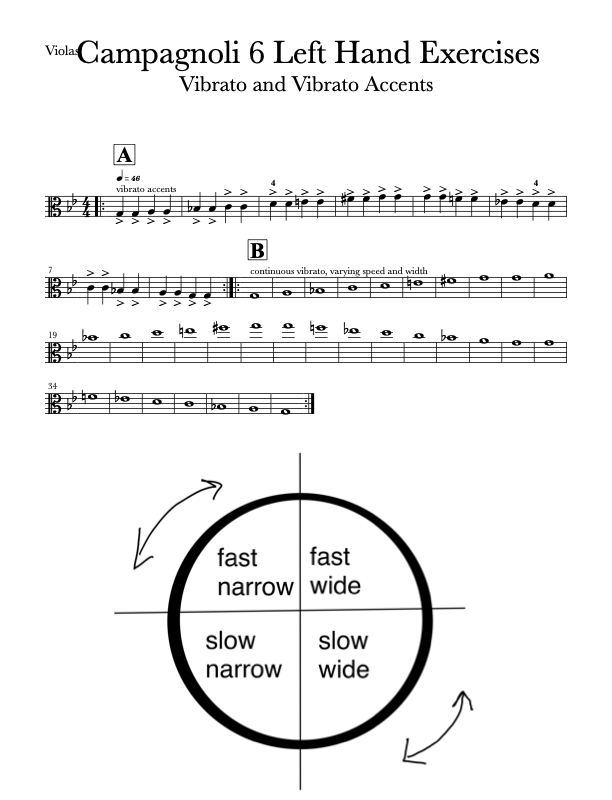IN THIS LESSON
VIBRATO IS KEY TO CONTROLLING THE MOOD AND EXPRESSION.
Exercise A focuses on integrating vibrato with accents. Begin each note with an immediate and wide vibrato to enhance its resonance. The bow stroke can feel like a deep push or a fast scoop to emphasize the vibrato's effect.
Exercise B uses a slow, 2-octave G minor scale as the foundation to explore various types of vibrato illustrated in the diagram below. Vibrato can vary from fast to slow, and from narrow oscillations to wide ones. This results in four main types of vibrato: fast/narrow, fast/wide, slow/wide, and slow/narrow. Practice transitioning between these vibrato styles by adjusting the speed and width of your vibrato as you play through the scale. Gradually modify each note to explore different points on the vibrato spectrum.
-
Vibrating is hard if your shoulder rest is not set to just the right height and shape - your arm needs to be free, not locked in place holding your instrument up! You can adjust your shoulder rest with sponges like these.
